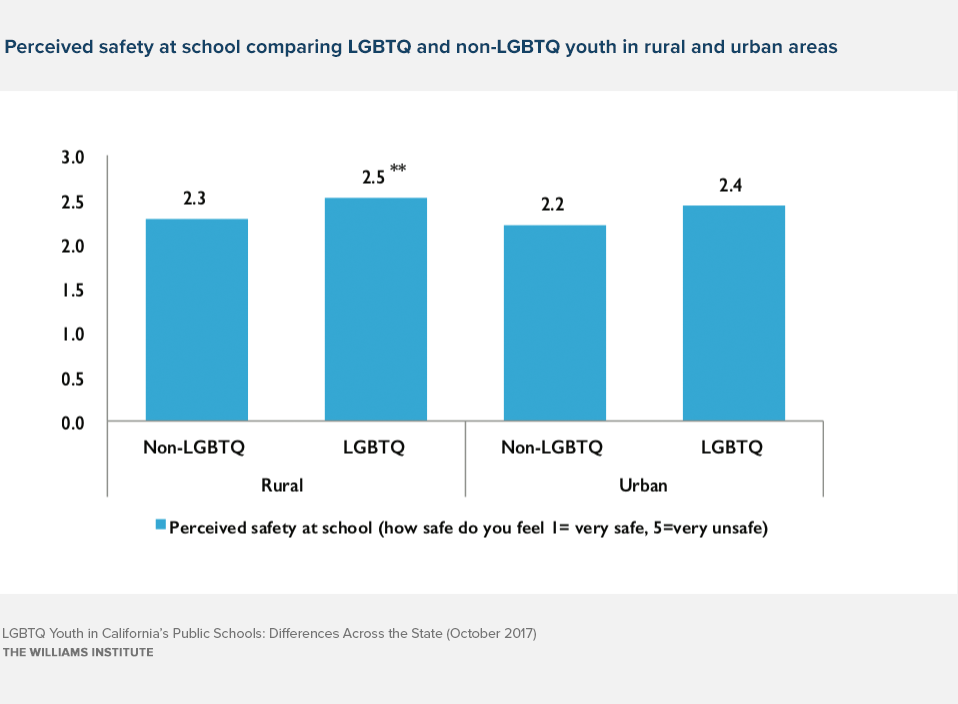Executive Summary
In California, like a few other states, there are a host of state-level laws that are intended to protect lesbian, gay, bisexual, transgender or questioning (LGBTQ) youth from the types of disparities observed in national or other-state specific research. These laws prohibit discrimination based on sexual orientation and gender identity within schools and foster homes, requires LGBT-inclusive cultural and historical education in schools and LGBTQ-inclusive sex and health education, and enumerate these social statuses within anti-bullying statutes. Though there are state-wide protective laws, California is a highly diverse state and there are likely to be variations in how the laws are implemented across regions. In this complete context, the current report examine whether LGBTQ and non-LGBTQ youth in California differed on key indicators related to school experiences and well-being. The report also assessed differences in school outcomes and well-being between LGBTQ and non-LGBTQ youth by rural and urban areas within six regions in California to assess any geographic disparities.
We used the California Student Survey (CSS) and the California Healthy Kids Survey (CHKS) to understand the experiences of California youth and the ways sexual orientation and gender identity are related to their well-being. Both are large scale surveys conducted within middle and high schools in the state. Specifically, we used the CSS dataset, which is representative of the state youth population, to look at differences between LGBTQ and non-LGBTQ youth in terms of demographic information, school, climate, victimization reports, and substance use at the state level. We used the CHKS dataset to examine differences between LGBTQ and non-LGBTQ youth by rural and urban areas and within six regions in California. Regional analysis available in the Addendum.
Main findings
LGBTQ Youth Estimates
- Overall, 10.3% of California’s students in public middle and high schools identified as LGBTQ. In rural areas, 10.0% of students surveyed identified as LGBTQ. In urban areas, 10.5% of students surveyed identified as LGBTQ.
School Environment
- Across the state, LGBTQ youth reported having less meaningful school participation, lower expectations from adults, fewer caring adult relationships at school, and a lower level of school connection than non-LGBTQ youth.
- LGBTQ youth in rural areas experienced a more negative school environment than LGBTQ youth in urban areas. LGBTQ youth in rural communities reported lower levels of school connectedness, fewer caring adult relationships, and less meaningful participation at school than urban LGBTQ youth.
- Analyses by rural and urban areas and within regions showed that LGBTQ youth were more likely to attend non-traditional schools, which are mostly continuation and alternative schools, than non- LGBTQ youth.


